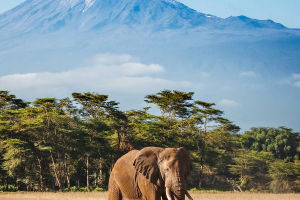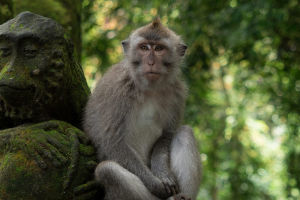Deforestation, the large-scale clearing of forests for various human activities, has become one of the most pressing environmental concerns of our time.
While its impacts are far-reaching, one of the most alarming consequences of deforestation is its effect on wildlife and their habitats.
Forests provide essential ecosystems for countless species, offering shelter, food, and breeding grounds. When these forests disappear, the creatures that depend on them are placed at serious risk.
The Direct Impact of Forest Loss on Wildlife
Wildlife populations are intricately linked to their environments. Forests, with their dense trees, rich undergrowth, and diverse vegetation, are crucial for species ranging from insects to large mammals. For example, the jaguar, an apex predator, depends on the dense tropical forests of Central and South America for both shelter and prey.
When forests are destroyed, these animals are either forced to migrate or, worse, face extinction.
Moreover, forest destruction disrupts the food chain. Herbivores lose their primary sources of food, which in turn affects the predators that rely on them. In many cases, the reduction in biodiversity is so severe that entire species are pushed to the brink of extinction. The loss of just one species in a forest can cause cascading effects throughout the ecosystem.
The Deterioration of Habitats: A Silent Crisis
Beyond the immediate effects on animal populations, deforestation leads to habitat fragmentation. As forests are cut down, the once contiguous ecosystems are divided into smaller, isolated patches. These "islands" of habitat are often too small or too fragmented to support viable populations of wildlife. This isolation leads to inbreeding, reduced genetic diversity, and increased vulnerability to disease, making species less resilient to environmental changes.
For example, the orangutan, found in the rainforests of Southeast Asia, is facing a dramatic decline due to habitat fragmentation. As their forests are cleared for palm oil plantations, the remaining patches of habitat are often too small to sustain viable populations. This results in a destructive cycle where animals are pushed into smaller areas, making them more susceptible to predation, disease, and competition.
Deforestation's Role in Climate Change
Deforestation is not just an issue for wildlife. It's also a major driver of climate change. Forests act as carbon sinks, absorbing carbon dioxide from the atmosphere and storing it.
When forests are destroyed, not only is this carbon storage capacity lost, but the carbon stored in trees is released back into the atmosphere, contributing to global warming. As the climate warms, animals must adapt to rapidly changing conditions, further stressing their populations.
This vicious cycle exacerbates the challenges wildlife face, making it harder for species to survive. For example, Many species living in temperate forests struggle to adapt to the shifting climate, leading to reductions in population sizes or, in some cases, extinction.
Prof. William Laurance, ecologist at James Cook University, has noted that widespread forest loss "undermines the stability of ecosystems in ways that ripple through climate, biodiversity, and human well-being."
The Ripple Effects: Displacement and Conflict
As human activities expand, the encroachment on wildlife habitats becomes inevitable. Forests are cleared to make way for agriculture, mining, and urbanization. This not only displaces animals but also leads to conflict between humans and wildlife.
Animals, forced to venture into human settlements in search of food or shelter, often face retaliation from local communities. In some cases, endangered species like elephants and tigers enter villages, leading to human-wildlife conflicts that endanger both the animals and the people.
Dr. Ruth DeFries, environmental geographer at Columbia University, emphasizes that "protecting forests is not only about saving wildlife but also about safeguarding essential resources that people depend on."
Additionally, the destruction of forests often results in the loss of resources that local communities depend on for their livelihoods. Indigenous groups, who rely on forests for food, water, and medicinal plants, face displacement when their lands are cleared. This creates a double threat—both to the wildlife that loses its home and to the human populations that depend on these forests.
What Can Be Done to Mitigate the Threats of Deforestation?
While deforestation continues to pose a significant threat to wildlife, there is hope through a combination of proactive strategies and global cooperation. One of the most effective ways to protect wildlife is by establishing and enforcing protected areas. These reserves provide safe havens for endangered species and help preserve critical ecosystems.
Countries and organizations worldwide are increasing efforts to create and maintain these protected areas, and they have shown success in conserving biodiversity.
Additionally, sustainable agricultural practices, such as agroforestry, can help balance the need for food production with forest conservation. By integrating trees into agricultural landscapes, farmers can reduce the need for large-scale deforestation, while still meeting economic and food security needs.
Governments, corporations, and individuals all have roles to play. Corporate responsibility in the form of sustainable sourcing, especially when it comes to products like palm oil, timber, and paper, can reduce the demand for forest destruction. Individuals can support wildlife conservation efforts by making eco-friendly purchasing decisions and raising awareness about the importance of forest ecosystems.
The Way Forward: Collective Action for Wildlife and Forests
The link between deforestation, wildlife conservation, and climate change underscores the urgency of collective action. As more people become aware of the consequences of forest loss, there is hope that future generations will prioritize the protection of both wildlife and their habitats.
The survival of countless species, including those we cherish most, depends on it.
In conclusion, deforestation is a global problem with profound implications for wildlife, their habitats, and the health of our planet. The protection of forests is not only essential for the survival of animals but also for maintaining the delicate balance of life on Earth. By acting now to preserve forests and the creatures that rely on them, we ensure a more sustainable future for both wildlife and humanity.


